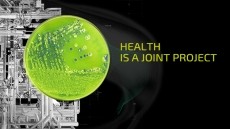Scientists achieve tighter control of batch reactions
productions - widely used in the pharmaceutical industry - which
has the potential of improving yields and reducing the number of
lost batches.
During a batch production, substances react in a reactor vessel according to a certain set of conditions to produce an end product. After the reaction the reactor is emptied and a new reaction with the same conditions is started. The researchers have devised a way of monitoring the various conditions - temperature, pressure etc - in an integrated way that should make it easier to spot when a reaction is going awry.
"The current methods of process control monitor all of the parameters during the reaction, such as pressure and temperature, separately. As a result of this the control process costs a lot of time and not all of the process disruptions are clearly visible," according to Eric van Sprang and Henk-Jan Ramaker of Amsterdam University.
They have developed a control method that also takes the relationship between various process parameters into account.
The researchers made a model to predict how large the parameter variations can be without endangering the quality of the product. They collected the process parameters from more than 30 batches and then described the process variation with the help of a model. Finally, they used this model to make two control cards that an operator can use to control the process.
If the process parameters of the reaction remain within the control limits, the process is proceeding as intended. If that is not the case, there is a process disruption.
Traditionally factories control a chemical process by the use of sensors in the reactor. The outcome of each separate measurement is noted on a so-called univariate control chart, and several charts are needed to monitor several variables.
"This means that the relationships between different parameters are ignored,"they claim. For example, if the pressure in the reactor vessel increases, the temperature often rises as well. However, if this relationship no longer holds due to a process disruption, univariate control charts might not detect this.
Using the new method the process operator in the control room only needs to monitor two control cards, and the early and reliable detection of process disruptions should in theory lead to indirect cost savings on the process.
"Batch control is important for safety, the environment and product quality," according to van Sprang and Ramaker. Although the quality of the product made in a batch process depends on the various parameters involved in the chemical reaction, these parameters are never the same for all batches, they note.



















